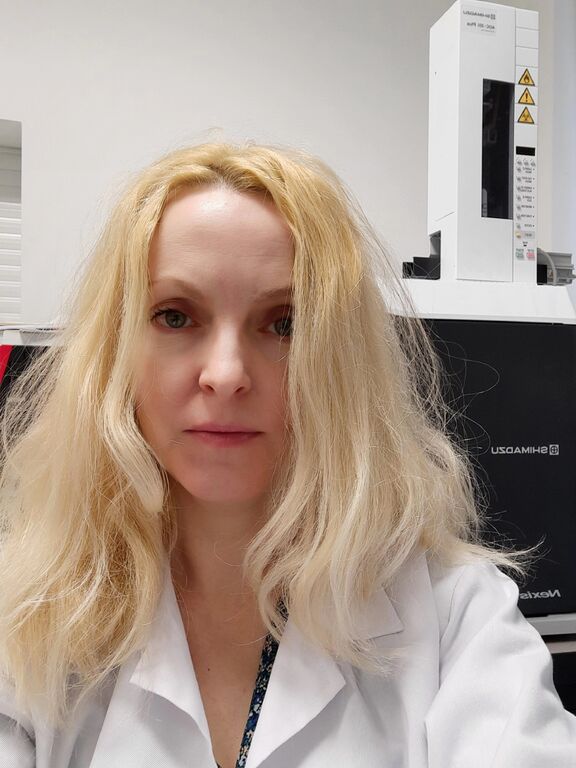Paints and plasters containing special active substances can break down air pollutants. Such materials are already in use with positive results, removing even very harmful substances.
We owe the development of this technology to Prof. Magdalena Janus, professor of West Pomeranian University of Technology in Szczecin (ZUT). Due to her research this innovative method of air purification may become more efficient and less expensive. Prof. Magdalena Janus conducted her research in this field as part of the NAWA scholarship at the Technical University of Berlin (TU Berlin), at the Institute of Building Materials and Construction Chemistry. The researcher is a beneficiary of the Bekker Programme.
NAWA: What is the innovation that you are working on all about?
Prof. Magdalena Janus, professor of ZUT: My research mainly focuses on photoactive building materials. Photoactivity is obtained by introducing a photocatalyst into the matrix of a building material such as gypsum or cement. The photocatalyst in my case is titanium dioxide. Titanium dioxide is produced by the chemical plant Grupa Azoty Zakłady Chemiczne Police S.A. on a large scale in Poland as so-called titanium white, a white pigment used in many sectors of industry, for example as an additive to paints, paper or cosmetics. Appropriate modification makes this material photoactive, which is an activity initiated by light, such as solar radiation. When such material is exposed to light, hydroxyl radicals are formed on its surface. They are able to decompose any organic compound into carbon dioxide and water. In my research in Berlin, I introduced nitrogen-modified titanium dioxide into cements to make the material more efficient.
What is the application of cements with added photocatalysts?
Cements with added photocatalysts can clean the air of volatile organic compounds or nitrogen oxides. In addition, such cements exhibit surface self-cleaning properties as well as antibacterial properties. Thanks to such materials, the air can be purified with the help of the sun.
Which more traditional materials can these cements replace?
Plaster can be prepared using such cements. However, there may be no organic compounds in the composition of the plasters. This is because the catalyst destroys all organic compounds it comes into contact with. So, if there are organic compounds in the composition of the cement, the catalyst will also decompose them, which will reduce the air purification efficiency. Concrete and paving bricks can also be prepared using this material. The surface of such concretes may not be covered with anything as the decomposition reactions for impurities take place on the surface of the materials.
In Japan, similar materials have been used for 30 years. They are gradually spreading to other regions of the world as well. Catalysts are able to break down the toughest pollutants, even very poisonous ones, such as those that bacteria cannot handle.
What was the impact of the NAWA scholarship on your development as a scientist?
The scholarship has definitely had an impact on my academic development. My faculty supervisor was Prof. Dietmar Stephan – director of the institute where I did my research. He is a chemist, but he works at the building institute, so he is in charge of interdisciplinary work. The research resulted in two publications:
1) M. Janus, S. Mądraszewski, K. Zając, E. Kusiak-Nejman, Antoni W. Morawski, Dietmar Stephan, Photocatalytic activity and mechanical properties of cements modified with TiO2/N, Materials 12(22) (2019) 3756
2) M. Janus, K. Zając, C. Ehm, D. Stephan, Fast method for testing the photocatalytic performance of modified gypsum, 9(8) (2019) 693
Another publication is currently under review in the journal Materials
3) M. Janus, S. Mądraszewski, K. Zając, E. Kusiak-Nejman, A new method of photoactive cement preparation
I have also developed an idea for a new formulation modification for photoactive cements that could make them much cheaper. However, this requires further research. On the other hand, the nitrogen-modified photocatalyst that we tested in Berlin is ready for industrial-scale production.
If you were to encourage other scientists to take part in the Bekker Programme, what is the greatest value of a NAWA scholarship?
The greatest value for me in fellowships abroad is to move to laboratories in other countries and observe the way they work and conduct research. Several good solutions can later be transferred to the home university. It is certainly very important to meet new people, which results in further cooperation. In 2020, together with TU Berlin, I submitted a project funding application to the National Science Centre. After my stay in Berlin, I know that if I needed to do research in the labs there, I could do it at any time, especially since my former graduate student is now Prof. Stephan’s PhD student and is involved in one of his projects.
Thank you for your time.

Prof. Magdalena Janus, professor of ZUT, is a chemist dealing with photocatalysis and in particular with obtaining and testing photoactive building materials. Her research comprises the application of photoactive building materials in the purification of air from volatile organic compounds and nitrogen oxides. Prof. Magdalena Janus graduated in chemical technology from Szczecin University of Technology (now West Pomeranian University of Technology in Szczecin). She was twice a scholarship holder of the Foundation for Polish Science, received a scholarship for outstanding young scientists and the award of the Minister of Science and Higher Education of the first degree for her scientific achievements in 2013. In 2018, she became the beneficiary of the first edition of the Bekker Programme (NAWA). As a result, she carried out a six-month research project in Prof. Dietmar Stephan’s group at TU Berlin.
How to receive a NAWA scholarship under the Bekker Programme?
Detailed information about the NAWA programme can be found HERE
Photo: private archive of Professor Magdalena Janus.









